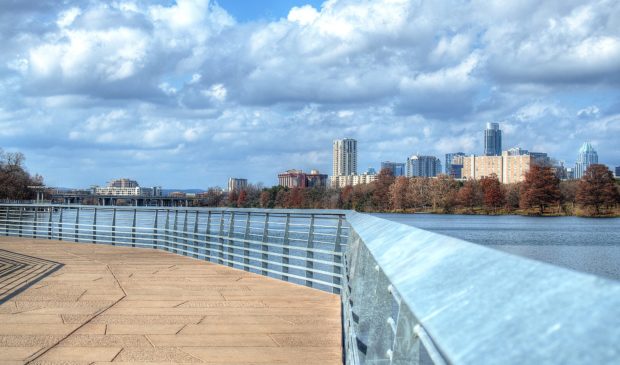Newsletter Signup
The Austin Monitor thanks its sponsors. Become one.
Most Popular Stories
- Council members celebrate unanimous defeat of bill that proposed putting Austin under state control
- A once-banned type of building is back in favor – and the Planning Commission approves
- SOS suing state agency over failure to provide information on MoPac expansion
- Austin churches answer prayers for affordable housing – by building it themselves
- East Austin’s ‘wishbone’ bridge takes shape as concrete beams almost span Lady Bird Lake
-
Discover News By District

In light of urgent United Nations report, Austin updates climate plan
Monday, February 4, 2019 by Jessi Devenyns
When Austin developed its Community Climate Plan in 2015, declaring its ambition to become a carbon neutral community by 2050, the plan was heralded as a landmark decision by Council.
However, that was before leading United Nations scientists alerted the citizens of the world to the fact that we have just 12 years to make massive changes to limit global warming to moderate levels before it’s too late.
Now, in light of the U.N.’s recommendations and because it has been four years since the city implemented the plan, the Joint Sustainability Committee is preparing to make updates. Zach Baumer, the city’s Climate Program manager, presented the bare-bones framework for how the committee would approach these updates at the Jan. 23 meeting of the committee, but that left a lingering question as to where the body would procure the necessary volunteers to staff the required expert subcommittees. Five different expert teams will report to an overall steering committee, that will in turn relay information to the Joint Sustainability Committee.
“I’m going to need help to get the collective mind on who do we know and who are we connected to,” said Baumer. “Help me get those names.” While he expressed confidence that they would be able to fill the positions, committee member Kaiba White shared her concern that it could be difficult to do based on the frequency of the meetings.
Committee member Nhat Ho suggested approaching the edit of the climate plan with efficiency rather than frequency as one of the paramount components. He suggested using a live brainstorming document like Google Docs “would eliminate the concern that it’s just a bunch of people talking about the same thing at different times.”
Amid the planning around how to efficiently execute the update, committee member Michael Osborne expressed confusion at the circular conversation pertaining to what he referred to as “blue boxes.” “I would still like to think we could get out of first gear and pick up some speed and maybe get somewhere. And when I see stuff like this … this is exactly the kind of thing that looks real good, but I’m not sure it guarantees success,” he said.
Several other committee members countered that it was necessary to approach the planning from a solid base that included understanding how the chain of reporting would work as well as the specific tasks for each group. Committee member Joep Meijer explained that once the ball gets rolling and updates to the plan begin, if the city finds that any suggestion seems appropriate right off the bat, “we don’t have to wait a year and a half to start implementing.”
Community engagement was the most important component that the committee members identified. They discussed how to reach the general public as well as government entities, businesses, industries, and nonprofits that would be affected not only by climate change but to an update to Austin’s climate plan. “We need to do a better job to make it a plan of all stakeholders,” said Meijer.
The next step is to create a framework that will allow all the involved individuals to understand the scope of the project and to efficiently and effectively communicate their recommendations. At the next committee meeting on Feb. 27, Baumer assured the committee members that he would have a draft outlining the charges for the steering committee, the scope of work for each subcommittee and a way to bridge the update project with Austin’s Bloomberg Philanthropies’ American Cities Climate Challenge award.
At the end of the meeting, Osborne noted that everything boils down to the implementation of one task: carbon reduction. “We know what needs to be done,” he said. “Then focus on that.”
Photo by James Kerr [CC0], via Wikimedia Commons.
The Austin Monitor’s work is made possible by donations from the community. Though our reporting covers donors from time to time, we are careful to keep business and editorial efforts separate while maintaining transparency. A complete list of donors is available here, and our code of ethics is explained here.
You're a community leader
And we’re honored you look to us for serious, in-depth news. You know a strong community needs local and dedicated watchdog reporting. We’re here for you and that won’t change. Now will you take the powerful next step and support our nonprofit news organization?







